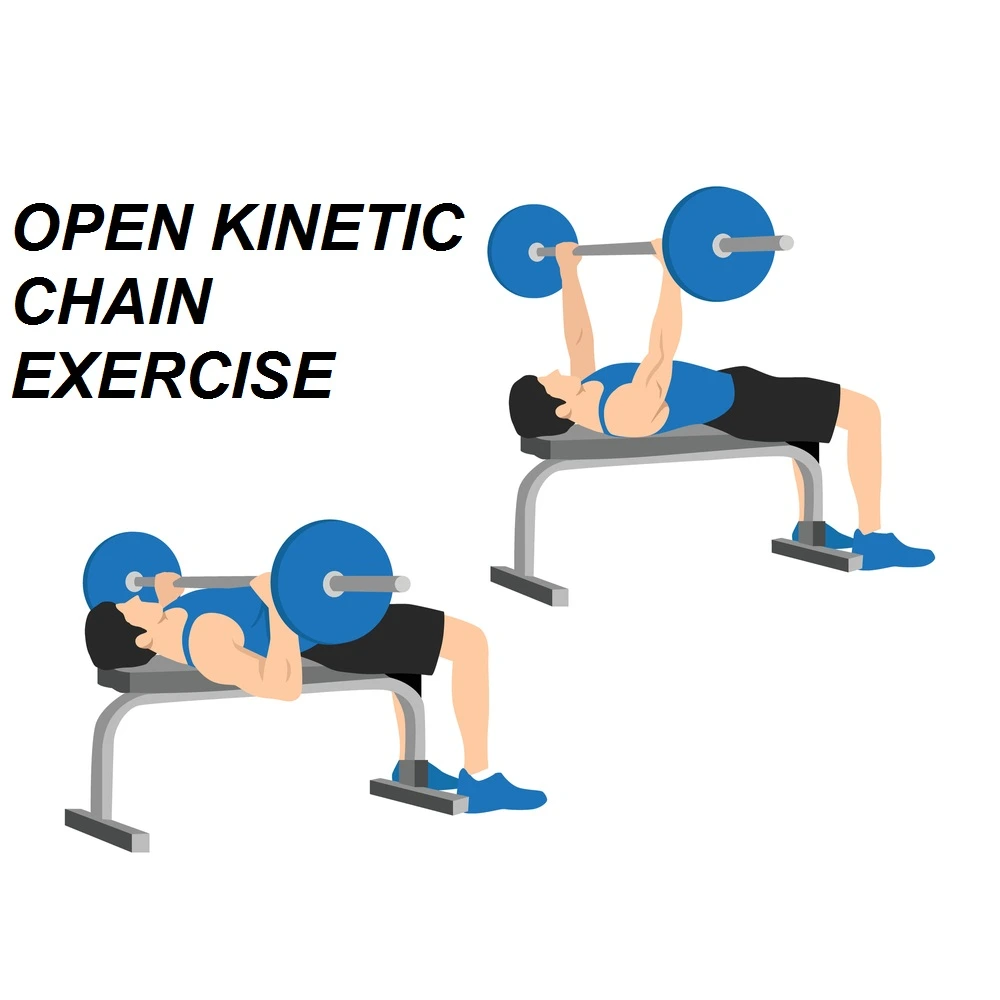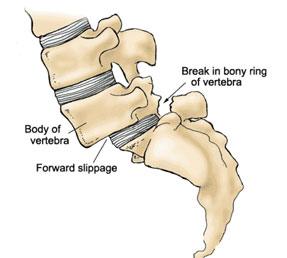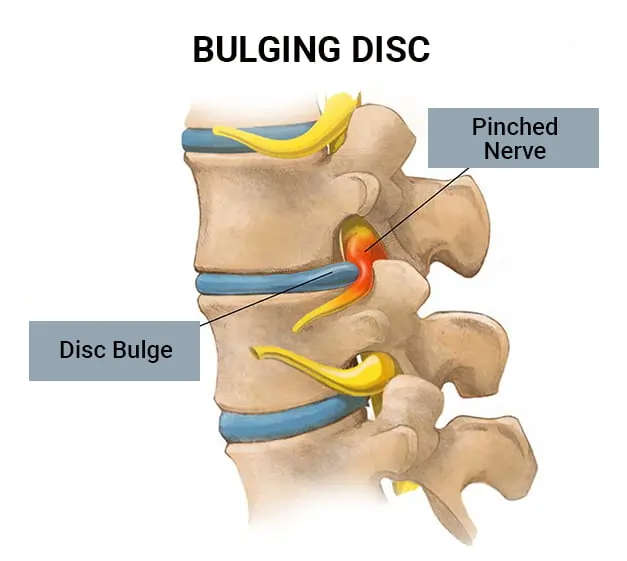Open Kinetic Chain (OKC) Exercise
One sort of exercise in which the distal portion of the body, such as the hand or foot, is free to move is known as an “Open chain exercise” (OKC). The bodily components that are distant from the body are fixed in contrast to a closed kinetic chain. Exercises with an open or closed kinetic chain both have advantages. An open kinetic chain (OKC) exercise’s key advantage is its ability to isolate a specific muscle during strength training.
Table of Contents
What is the kinetic chain?
The kinetic chain, a network of muscles, joints, and connective tissue, works together to produce specific motions. Because everything in your body is interrelated, every action you take involves a kinetic chain. Changes in one area may thus have an effect on others.
These extra segments might be located distally, which is farther from the body, or proximally, which is closer to the torso. Consider the motion of swinging a ball stick during a game. Your arm isn’t the only thing that’s moving. The movement starts in your lower body to provide some force, moves through your middle to stabilize your posture and allow for rotation, and finishes with movements in your upper body’s shoulder, elbow, and wrist joints.
In engineering, the term “kinetic chain” (sometimes spelled “kinematic chain”) is used to describe how people move. It is used in a variety of therapeutic contexts, including those involving the musculoskeletal system, sports medicine, neuro-rehabilitation, prosthetics, and orthotics. Franz Reuleaux, a mechanical engineer, made the suggestion in 1875. He favored joining stiff, overlapping segments with joints to create a system in which movement at one joint in the kinetic link resulted in or had an effect on movement at another joint.
Kinetic chain exercises come in two varieties: open-chain exercises and closed-chain exercises.
What is an Open Kinetic Chain (OKC) Exercise?
Open Kinetic Chain (OKC) exercises are a type of physical activity commonly used in rehabilitation and strength training programs. In OKC exercises, the distal end of the limb (such as the hand or foot) is not fixed to a surface or object, allowing it to move freely in space. This distinguishes OKC exercises from Closed Kinetic Chain (CKC) exercises, where the distal end of the limb is fixed or supported.
Human movement in the kinetic chain can be described as either an open kinetic chain (OKC) or a closed kinetic chain (CKC).
The main advantage of an open kinetic chain (OKC) workout is the ability to isolate a muscle. Since open-chain techniques may be easily managed to target precise individual muscles more effectively than their closed-chain counterparts at different intervals of constriction, they are often used in restoration situations.
Characteristics of Open Kinetic Chain (OKC) Exercise:
Open kinetic chain workouts are characterized by enhanced distraction and rotational forces, increased deformation of joint and muscle mechanoreceptors, concentric acceleration and eccentric deceleration forces, and stimulation of functional activity. Such movements are typical of ones that do not carry weight.
Although rolling and other types of movement may occasionally occur, the major joint movement serves as their primary means of differentiation. During the knee extension exercise, the tibia is mobile while the femur, which makes up one section of the joint, remains immobile. The only muscles engaged are those that are linked to a single joint.
Exercises with an open kinetic chain are frequently distinguished by a rotating stress distribution in the joint. For instance, although other motions like rotation and translation also take place during sitting knee extension, the predominant load on the joint is caused by the rotation of the proximal femur to the distal tibia. Movements in an open kinetic chain happen along one major axis.
The majority of the action during a sitting knee extension exercise takes place in the sagittal plane. Typically, there can only be one section moving concurrently. “One segment of the joint, the femur, remains stationary during the knee extension exercise, while another segment of the joint, the tibia, is mobile.”
It improves exercise control since the immovable part (the femur) is stable. These exercises provide higher isolated muscle activation since less muscular contraction is needed to complete the movement.
The segment or distal side that is furthest from the body in open kinetic chain activities is free and unattached, often an arm or a leg.
It is fixed or static in a closed loop.
Open Kinetic Chain (OKC) Exercise for muscle isolation
Although complex actions as a whole are more efficient, there may be occasions when you want to isolate a particular muscle or small group of muscles. Exercises with an open kinetic chain are beneficial here. Bodybuilders typically use isolation exercises, such as triceps extensions or biceps curls, to focus on certain body areas, such as the arms.
Another justification for performing solitary exercises is to correct muscle imbalances. One region of strength could outweigh another due to an injury or poor form. There are times when using an open-chain exercise to target a single muscle can help with technique and reduce the risk of injury.
Open Chain for sports training:
Everyone who plays a sport can benefit from training with open-chain exercises. During training, exercises that replicate the movements employed in your sport may be helpful. If you participate in a sport that requires you to toss a ball or swing a racquet, incorporate some open chain motions that mirror such moves. Lunges with additional core and arm rotation can be one of these.
Open versus Closed kinetic chain exercises:
OPEN KINETIC CHAIN: An open kinetic chain exercise (OKC) is one in which the section that is furthest from the body, such as the foot, is free and not linked to anything.
CLOSE KINETIC CHAIN: The distal ends of the limbs are fixed to a stationary object during workouts or motions referred to as closed kinetic chain (CKC) exercises or closed chain movements.
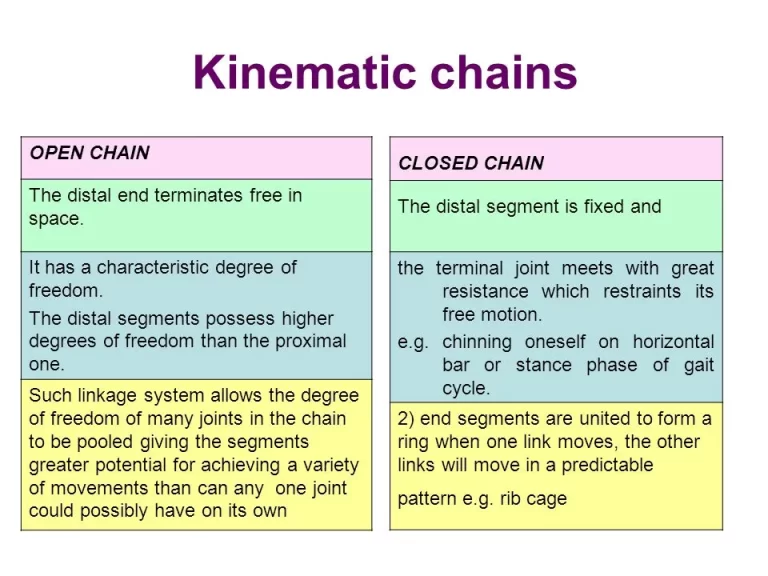
The distinction between open and closed movements is clear, but the results are a little more nuanced.
Closed-chain exercises frequently involve the complex movements of squats and lunges. These powerful exercises engage multiple muscles at once. They are typically helpful and imitate people’s normal movements.
Solitary activities are often open kinetic workouts. Comparing a leg curl to a closed-arm deadlift will help. With very few exceptions, open exercises typically use fewer muscles and one joint compared to closed activities.
EXAMPLES:
- OKC: Biceps curl, Bench press, Leg extension, Leg curl
- CKC: Push-ups, Pulls-ups, Crunches, Lunges
Open kinetic chain workouts provide the following two benefits over closed kinetic chain exercises:
- Less strain on the body, nervous system, and lower back – Training with less stress on the body and nervous system will nonetheless result in more energy and faster recovery. This may be strategically established depending on recovery potential and other demands outside of strength training, such as necessities for regular living and sports training.
- Greater isolation — Because the majority of OKC exercises only involve one primary joint, they focus more on isolating a specific muscle and weak link. This enables and supports a higher local training impact and increased adaptation of certain muscle fibers. The same rationale makes OKC exercises crucial for maximizing muscular balance.
Exercise with an open kinetic chain’s biomechanics at various joints
Knee joint:
The sports trainer must comprehend the forces that are present around the knee joint. Palmer et al. suggested a biomechanical model of the lower extremities that measures two significant forces at the knee joint. The tibia would translate anteriorly under shear force in the posterior direction if not restricted by soft tissue limitations, notably the anterior cruciate ligament (ACL). A compressive force is administered along the tibia’s longitudinal axis as the second force. Weightlifting exercises constrict joints and increase joint stability.
The resistive forces that are applied in various locations have an impact on the strength of the shear and compressive forces. (A) Resistance applied distantly. (B) The resistance that is applied close by. (C) A resistive force that is applied axially. (D) Hamstring constriction and distal resistive force.
In an open kinetic chain seated knee-joint exercise with a resistive force being applied to the distal tibia, the shear and compressive forces would be at their greatest. As a resistive force is applied closer to the object, shear and compressive forces significantly diminish. If the resistive force is applied more axially, the shear force is likewise reduced. The hamstrings’ ability to contract lessens the shear force.
Only during an open kinetic chain exercise including seated leg extensions and resistive force applied to the distal tibia does a flexion moment occur at the knee. As a result, the benefits of hamstring contraction are defeated since the knee joint is subjected to the maximum amount of shear strain. Isometric open kinetic chain workouts result in greater shear forces than closed kinetic chain exercises at 30 and 60 degrees of knee flexion.
Patellofemoral Joint:
The effects of various kinetic chain exercises on the patellofemoral joint must be considered. The pressure on the quadriceps and patellar tendon increases as the knee extends from 90 degrees of flexion to full extension when doing an open kinetic chain knee extension workout.
The outcome is an increase in the patellofemoral joint response forces, which peak at a joint flexion angle of 36 degrees. When the knee is completely extended, the patellofemoral contact area decreases, increasing the contact stress per unit area.
Foot and Ankle:
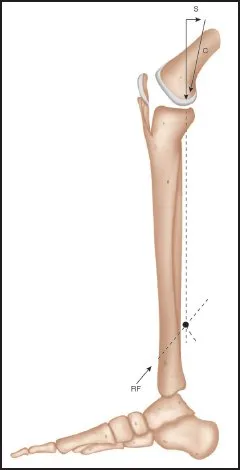
When the body is carrying its weight, the foot has two functions. The foot must first act as a shock absorber for the impact or ground response forces when it is struck on the heel, and then it must adjust to function as a stiff lever to transmit the explosive force from the lower extremities to the ground.
A plantar flexion and talus adduction occur during supination in an open kinetic chain as the calcaneus inverts.
The foot moves into plantar flexion and adduction around the stabilized talus. When the foot position (i.e., pronation or supination) changes, the vastus medialis or vastus lateralis electromyogram (EMG) activity seems to be minor or unaltered.
Examples of open kinetic chain exercises:
Any exercise you can think of that involves moving the distal end of the body through space is an open chain.
- Triceps kickbacks and extensions
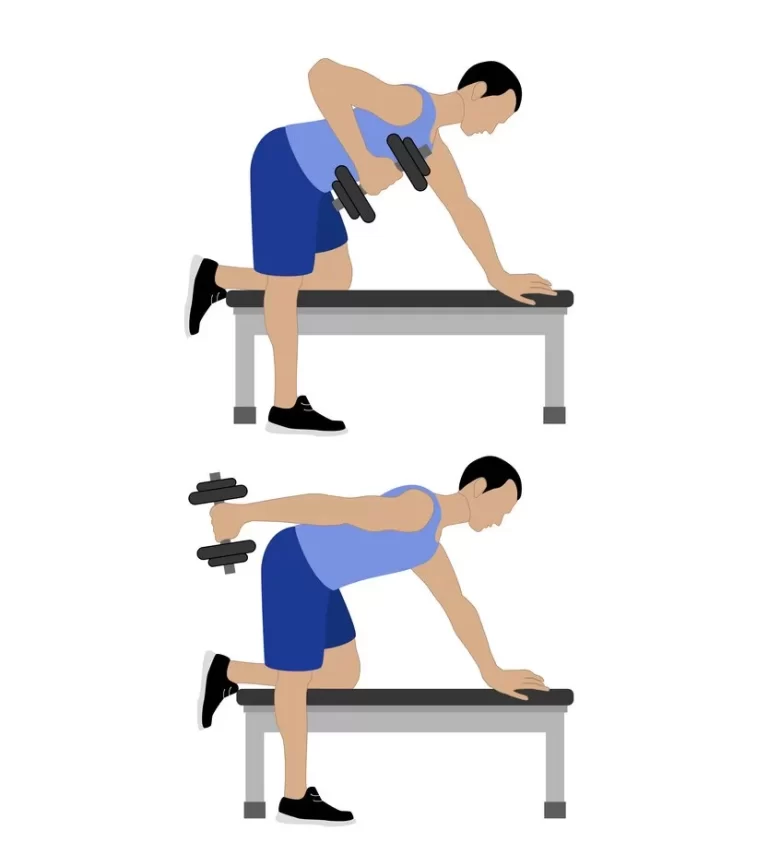
- Shoulder press
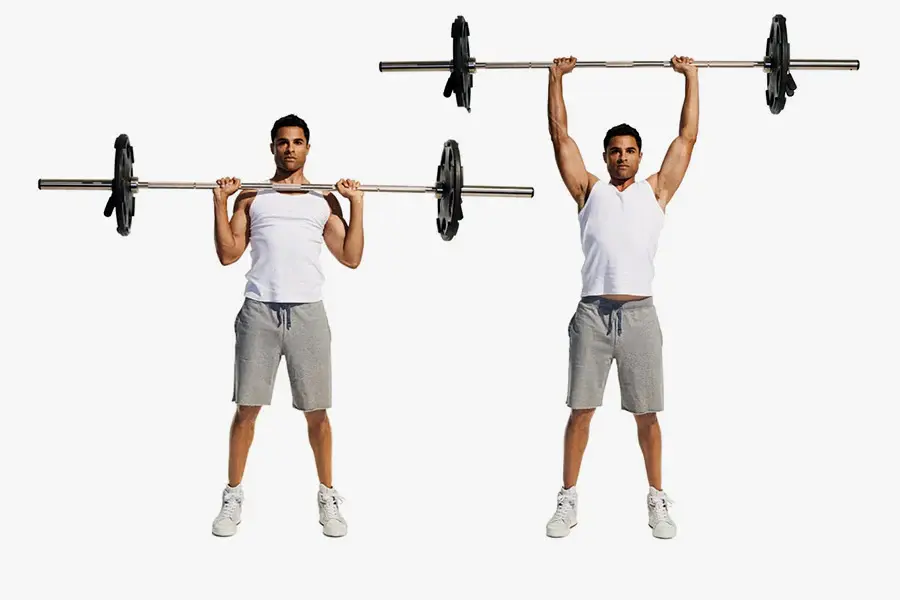
- Chest presses
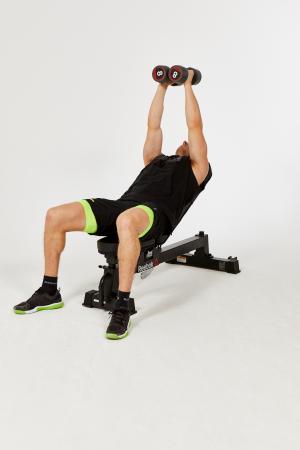
- Chest flyes
- Lat pull-downs
- Seated or bent over a row
- Leg extension (knee extension)
- Leg curl (knee flexion)
- Seated leg press
- Donkey kicks
Exercises with an open kinetic chain are beneficial for whom?
The quick response is everyone. Bad movement habits may develop quite fast in both sports and daily activities. Through training with open-kinetic-chain exercises, which will also maintain the stability of your movement, you may concentrate on certain muscles for specific motions. Joint injuries can be avoided with a wide range of coordinated motion.
Disadvantages of open kinetic chain exercise:
Open kinetic chain workout disadvantages:
From a biomechanical standpoint, it has been hypothesized that closed forces could provide less of a threat to healing structures than open kinetic chain activities. The muscles of the agonist and antagonist must coactivate or contract in order to provide joint stabilization during normal motions. Co-contraction safeguards and restores soft tissue structures that may otherwise be harmed by open chain activities by reducing the shear pressures that are placed on the joint during closed kinetic chain training. Additionally, carrying weight makes the joints more stable by increasing the compressive pressures there.
When doing an activity with an open kinetic chain, motion is frequently limited to a single joint. Workouts that improve strength or range of motion (ROM) are examples of activities with an open kinetic chain. They might make use of neuromuscular facilitation (PNF), joint mobilization techniques, or some external resistance given by an exercise machine.
Contracting a single muscle or a group of muscles during isolation exercises typically produces single-plane and occasionally multiplanar movement. It is possible to get valuable insight into the isolated joint’s ability to produce torque through isokinetic training and testing, which are frequently performed in an open kinetic chain.
Strong open kinetic chain movements are necessary for strong closed kinetic chain motions to begin with.
Open chain exercises for Rehabilitation:
Physical therapists regularly employ open kinetic chain exercises to aid patients in their recovery. During the healing process after an accident or surgery, concentrating on one joint is usually important. The patient can regain strength in a particular area utilizing open chain, isolated workouts before moving on to more challenging motions.
Advantages of open kinetic chain training:
- Increase the joints’ compressive forces.
- decreases cutting forces
- Improves joint stability
- Lessen the forces of acceleration
- A proprioceptor stimulus
- more stable dynamically
- Forces that are less dangerous and safer
- contraction and joint activation
- Practical and extremely athletic
For bodybuilding and physique, OKC workouts let you target and isolate certain joints or muscles across the kinetic chain. This is excellent for building a proportional physique, boosting the power of weak muscles, and preparing each person individually to grow stronger multi-joint muscles. Often, only one joint is used in these exercises. Examples are an overhead dumbbell press or a seated leg extension, both of which allow the ankle joint to move freely.
Summary
If you want to plan your training effectively, exercises that employ an open chain are best. By including both open and close-chain workouts in a well-thought-out kinetics training program, you may build lean muscles and strength. These kinetic chain workouts may be used to improve your functional fitness and daily duties. Additionally, as part of physiotherapy, these exercises help to stabilize joints and enhance body balance. You may include effective open-chain movements like bench presses, bicep curls, and seated leg extensions in your program. When completing these exercises, observe all safety measures and maintain excellent form. With the least amount of stress on your joints or muscles, you’ll achieve the best outcomes.
FAQs
What are open kinetic chain exercises used for?
An “open kinetic chain exercise” is one that allows the distal portion of the limb to move freely while the proximal portion remains immobile. The main goal of OKC is to isolate certain muscle groups.
Is walking an unrestricted exercise?
The distal ends may move with exercises utilizing an open chain. Walking requires moving your feet and is therefore closed to the surfaces, making it a closed-chain workout. It is also regarded as one of the top exercises for weight loss.
Is swimming a closed-chain or open-chain activity?
In swimming, open-chain and closed-chain exercises are mixed. Every movement of it is an open chain, with the exception of the beginning and end.
What constitutes a valid open-chain exercise?
Exercises using open chains allow the chain’s furthest point to move about freely. An open-chain exercise may involve, for instance, filling up a glass of water. The hand has an effect on the elbow and shoulder since it is not set in place. However, it does not affect your full body.
Reference
Open Kinetic Chain Exercise – Characteristics, Benefits, Examples. Mobile Physiotherapy Clinic. https://mobilephysiotherapyclinic.in/open-kinetic-chain-exercise/
Open kinetic chain exercises – Wikipedia. (2012, April 28). Open Kinetic Chain Exercises – Wikipedia. https://en.wikipedia.org/wiki/Open_kinetic_chain_exercises
Motion, P. (2019, December 2). Open vs Closed Chain Exercises | Pivotal Motion Physiotherapy. Pivotal Motion Physiotherapy. https://pivotalmotion.physio/the-importance-of-open-vs-closed-chain-exercises/

